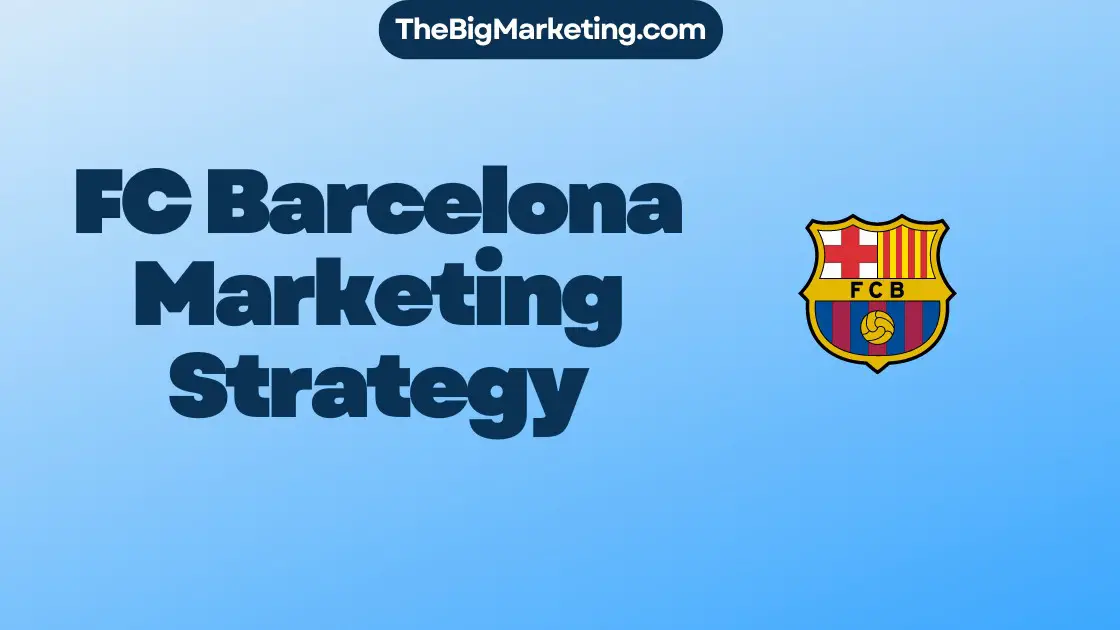Gojek, the leading on-demand multi-service platform in South East Asia (SEA), has revolutionized the way people access services. Founded in 2010 by Nadiem Makarim, Gojek has grown from a startup to a decacorn, valued at over $10 billion. One of the key factors behind Gojek’s success is its robust marketing strategy, which encompasses digital marketing, branding, customer acquisition, market segmentation, online advertising, and social media marketing.
Digital marketing plays a pivotal role in Gojek’s overall marketing strategy. Through targeted online campaigns and advertisements, Gojek reaches its target audience effectively, increasing brand visibility and attracting new customers. Their strong brand presence and consistent messaging have helped Gojek establish itself as a market leader.
Gojek’s customer acquisition strategy focuses on understanding the needs and preferences of their target market segments. By identifying specific customer segments and tailoring their services to meet their unique requirements, Gojek ensures high customer satisfaction and loyalty. This approach has enabled them to achieve significant customer acquisition and retention rates.
Market segmentation is another crucial aspect of Gojek’s marketing strategy. By dividing the market into different segments based on demographic, geographic, and behavioral factors, Gojek can create personalized marketing campaigns and offerings. This personalized approach allows them to effectively reach their target audience and cater to their specific needs and preferences.
Online advertising is an integral part of Gojek’s marketing strategy. They leverage various digital platforms, including websites, mobile apps, and social media, to reach their target audience with compelling ads. By utilizing advanced targeting techniques and analyzing user behavior, Gojek maximizes the impact of its online advertising efforts.
Social media marketing is another key element in Gojek’s marketing strategy. With a strong presence on platforms like Facebook, Instagram, and Twitter, Gojek engages with its audience on a personal level. They create valuable content, interact with users, and leverage user-generated content to build a strong community and generate brand advocacy.
In conclusion, Gojek’s marketing strategy is a comprehensive approach that combines digital marketing, branding, customer acquisition, market segmentation, online advertising, and social media marketing. This strategy has propelled Gojek to become a leading player in the on-demand service industry. By focusing on meeting customer needs, delivering personalized experiences, and leveraging digital channels, Gojek continues to thrive in the competitive market.
Key Takeaways:
- Gojek’s marketing strategy encompasses digital marketing, branding, customer acquisition, market segmentation, online advertising, and social media marketing.
- Digital marketing plays a crucial role in Gojek’s overall marketing strategy, increasing brand visibility and attracting new customers.
- Gojek focuses on understanding the needs and preferences of specific customer segments, driving high customer satisfaction and loyalty.
- Market segmentation allows Gojek to create personalized marketing campaigns and offerings, effectively reaching its target audience.
- Online advertising and social media marketing are integral to Gojek’s marketing strategy, maximizing the impact of their digital efforts.
The Beginnings of Gojek
Gojek, an on-demand multi-service platform, was founded in 2010 by Nadiem Makarim. The name “Gojek” is derived from “Ojek,” which means motorcycle taxi in Indonesia.
Gojek started as a call center connecting customers with motorcycle drivers, providing a convenient transportation solution. However, Gojek didn’t stop there. In 2015, it launched its first app, revolutionizing the way people access various services.
Since its inception, Gojek has experienced remarkable growth and success. It has become a decacorn, valued at over $10 billion, and has expanded its operations beyond Indonesia to countries like Thailand, Vietnam, and Singapore.
Gojek’s rise to prominence can be attributed to its innovative approach, particularly in the ride-sharing sector. By leveraging its extensive network of motorcycle drivers, Gojek introduced ride-sharing services, offering customers a reliable and affordable transportation option.
Furthermore, Gojek’s expansion into financial services with the launch of GoPay, its fintech group, has helped solidify its position as a market leader. GoPay offers users a seamless and secure platform for digital payments, allowing them to complete transactions with ease.
With its user-friendly app and diverse range of services, Gojek has transformed the way people in Southeast Asia access transportation, food delivery, financial services, and more.
Gojek’s Three Main Revenue Streams
Gojek, as a leading on-demand multi-service platform, has established three main revenue streams to drive its growth strategy and ensure a strong product-market fit.
Ride-Sharing
Ride-sharing is one of Gojek’s primary revenue streams. Through its innovative app, Gojek connects customers with motorcycle taxi drivers, providing convenient and affordable transportation options. This service plays a vital role in Gojek’s growth strategy, catering to the increasing demand for efficient urban mobility.
Delivery Services
In addition to ride-sharing, Gojek offers delivery services, enabling users to have a wide range of goods delivered right to their doorstep. From food and groceries to packages and documents, Gojek’s delivery services have become an essential part of people’s everyday lives. By diversifying its offerings, Gojek has expanded its revenue streams and cemented its position as a comprehensive on-demand platform.
Financial Services
Gojek has also ventured into the financial sector, providing various financial services through its fintech subsidiary, GoPay. With GoPay, users can perform transactions, pay bills, and even access microloans seamlessly within the Gojek app. This strategic move allows Gojek to capitalize on the growing digital payments market and generate additional revenue streams.
To ensure product-market fit and adapt to changing customer needs, Gojek follows the lean startup methodology. This approach involves conducting experiments to test the viability of new services, allowing Gojek to gather user feedback and iterate accordingly. By employing the Minimum Viable Product (MVP) approach, Gojek can launch initial versions of services and continuously improve them based on real-world usage data.
Furthermore, Gojek’s success can be attributed to its super app strategy. By consolidating multiple services within a single app, Gojek provides users with a seamless and convenient experience. This super app concept not only simplifies the user journey but also maximizes engagement and revenue potential by encouraging cross-service utilization.
Overall, Gojek’s three main revenue streams, coupled with its growth strategy, product-market fit approach, lean startup methodology, MVP implementation, and super app strategy, have solidified its position as a dominant player in the on-demand multi-service industry.
Gojek’s Purpose-driven Approach
Gojek is committed to driving Indonesia’s economic growth through its purpose-driven strategy. The company recognizes the unique needs of the unbanked population in the country and has taken steps to address their financial inclusion. By offering cash payment options, Gojek ensures that even those without bank accounts can access and benefit from their services.
Additionally, Gojek has formed strategic partnerships with banks to provide financial services to their customers. These partnerships enable Gojek to leverage the existing banking infrastructure and offer a wide range of financial solutions, including digital payments, loans, and insurance products.
Gojek’s purpose-driven approach not only aims to uplift the unbanked population but also contributes to the overall economic growth of Indonesia. By providing opportunities for income generation and facilitating financial transactions, Gojek plays a crucial role in supporting local businesses and entrepreneurs.
This socially responsible approach has helped Gojek establish a strong brand reputation and gain the trust of its customers. By focusing on the needs of the unbanked population and partnering with banks, Gojek differentiates itself from competitors and positions itself as a company that is dedicated to making a positive impact on society.
To further illustrate Gojek’s purpose-driven strategy, the table below highlights key partnerships the company has formed to expand financial services:
| Partnerships | Description |
|---|---|
| Bank XYZ | Collaboration to offer digital payments and money transfers |
| Financial Institution ABC | Joint initiatives to provide microloans to Gojek driver-partners |
| Payment Processor DEF | Integration for seamless electronic transactions within the Gojek app |
This purpose-driven strategy sets Gojek apart in the market and aligns with the company’s mission to improve the lives of Indonesians. By catering to the unbanked population and forging partnerships with financial institutions, Gojek strengthens economic growth and promotes financial inclusion throughout the country.
Acquisitions and Partnerships
In its pursuit of rapid growth, Gojek has strategically embraced acquisitions and partnerships to expand its reach and services. By acquiring companies such as MOKA, Kartuku, SPOTS, and Midtrans, Gojek has been able to broaden its offerings and strengthen its presence in the market. These acquisitions have not only provided Gojek with new capabilities and technologies but have also allowed them to tap into new customer segments and regional markets.
Furthermore, Gojek has fostered strategic alliances with prominent organizations, including Google, Bluebird, and various government agencies. These partnerships have enabled Gojek to enhance its offerings, integrate additional services, and streamline its operations. By collaborating with these well-established entities, Gojek has gained access to valuable resources, expertise, and market insights, ultimately fueling its expansion and market leadership.
One significant aspect of Gojek’s regional structure is its ability to form partnerships with local businesses in each market it operates. This approach ensures that Gojek can align its services with local preferences and cater to the specific needs of each region. Through strategic collaborations, Gojek can leverage the expertise and networks of these regional partners, facilitating seamless operations and localized marketing strategies.
Gojek’s commitment to forging strategic alliances and pursuing targeted acquisitions has contributed to its rapid growth and market dominance. By strategically expanding its reach and capabilities, Gojek is well-positioned to continue its upward trajectory and solidify its position as a leading on-demand multi-service platform.
Analysis and Recommendations
A thorough analysis of Gojek’s marketing strategy reveals that their focus on product-market fit, purpose-driven approach, and strategic partnerships has contributed to their success. To maintain their competitive advantage, Gojek should continue to prioritize market share growth, innovate their offerings, and improve communication and promotion. They should also keep an eye on external threats, such as global competition and disruptive innovations, and adapt accordingly.
Product-Market Fit
Gojek’s success can be attributed to its ability to understand and meet the needs of its target market. By conducting market research and collecting user feedback, Gojek has been able to develop services that resonate with their customers. To maintain their competitive advantage, Gojek should continue to invest in understanding their market and ensuring their services align with customer preferences.
Purpose-Driven Approach
Gojek’s purpose-driven approach has helped them establish a strong brand reputation and differentiate themselves from competitors. By focusing on driving Indonesia’s economic growth and catering to the needs of the unbanked population, Gojek has built trust and loyalty with their customers. To maintain their competitive advantage, Gojek should continue to prioritize their purpose-driven initiatives and communicate them effectively to their target audience.
Strategic Partnerships
Gojek’s strategic partnerships have played a crucial role in their expansion and success. By collaborating with banks, government agencies, and other industry players, Gojek has been able to enhance their offerings and access new markets. To maintain their competitive advantage, Gojek should continue to foster strategic alliances and seek partnerships that align with their business objectives.
Innovation and Adaptability
To stay ahead in a rapidly evolving market, Gojek needs to prioritize innovation and adaptability. They should invest in research and development to continually improve their existing services and explore new opportunities. By monitoring global competition and disruptive innovations, Gojek can proactively respond to emerging trends and ensure they remain at the forefront of the industry.
Communication and Promotion
Improving communication and promotion strategies is essential for Gojek to maintain and expand its market share. They should focus on building strong relationships with their customers through personalized marketing campaigns and effective customer communication. By leveraging social media, content marketing, and targeted advertising, Gojek can enhance brand awareness and customer engagement.
| Recommendation | Action |
|---|---|
| Prioritize market share growth | Invest in customer acquisition strategies and expand into new markets |
| Innovate offerings | Continually improve existing services and explore new service opportunities |
| Improve communication and promotion | Enhance customer communication and develop personalized marketing campaigns |
| Monitor global competition and disruptive innovations | Stay informed about industry trends and adapt accordingly |
| Foster strategic partnerships | Seek collaborations with banks, government agencies, and industry players |
Gojek’s Social Media Strategy
As a leading on-demand multi-service platform, Gojek recognizes the power of social media in reaching and engaging its target audience. Through a well-defined social media strategy, Gojek leverages the data collection capabilities of various social media tools to gain insights into customer behavior and preferences, enabling them to create effective marketing campaigns.
By monitoring and analyzing the data collected from social media platforms, Gojek can identify trends, interests, and sentiments within their target audience. This valuable information helps shape their marketing initiatives and allows them to tailor their messaging to resonate with their customers.
One of the key aspects of Gojek’s social media strategy is the use of popular hashtags and recognizable events. By strategically incorporating relevant hashtags and participating in conversations centered around trending topics, Gojek is able to engage with their audience and generate brand awareness. This approach not only increases visibility but also positions Gojek as a relevant and active participant in discussions that matter to their target audience.
Furthermore, Gojek’s social media strategy extends beyond promotional efforts. They use their social media platforms as a means to foster authentic connections with their customers, encouraging two-way communication. This approach allows Gojek to gather feedback, address concerns, and build trust with their audience.
Benefits of Gojek’s Social Media Strategy:
- Data Collection: By using various social media tools, Gojek collects valuable data about customer behavior and preferences.
- Targeted Marketing: The insights gained from data analysis enable Gojek to create personalized and targeted marketing campaigns.
- Brand Awareness: By leveraging popular hashtags and recognizable events, Gojek increases brand visibility and generates awareness.
- Engagement: Gojek’s active presence on social media enables them to connect with their audience, fostering engagement and building relationships.
- Customer Feedback: Social media provides a platform for customers to provide feedback, allowing Gojek to address concerns and continuously improve its services.
Gojek’s social media strategy plays a crucial role in enhancing its overall marketing efforts. By utilizing social media platforms as a key communication channel and leveraging data collection tools, Gojek is able to connect with its target audience effectively, create personalized campaigns, and establish itself as a leading brand in the on-demand service industry.
Gojek’s Product Strategy
Gojek understands the importance of launching services that fulfill market demand. To achieve this, they employ a comprehensive product strategy that focuses on extensive market research and simultaneous releases. By identifying the needs of specific areas, Gojek ensures that their new services are tailored to meet those demands effectively.
Market research plays a crucial role in Gojek’s product strategy. By analyzing trends, customer preferences, and market dynamics, they gain valuable insights into emerging opportunities. This enables Gojek to develop and launch services that are not only innovative but also aligned with the evolving needs of their target audience.
Simultaneous releases are another key aspect of Gojek’s product strategy. Recognizing the diverse preferences of their customer base, Gojek introduces multiple services simultaneously to cater to a wide range of needs. This approach allows them to capture a larger market share and maximize their impact in the industry.
Through their product strategy, Gojek achieves a delicate balance between proactive market research and timely service releases. This ensures that they consistently deliver solutions that fulfill market demand, thereby solidifying their position as a leader in the on-demand multi-service platform space.
| Benefits of Gojek’s Product Strategy |
|---|
| 1. Market-driven approach |
| 2. Enhanced customer satisfaction |
| 3. Increased market penetration |
| 4. Competitive advantage |
| 5. Business expansion opportunities |
Conclusion
Gojek’s marketing strategy has proven to be instrumental in its success as a leading on-demand multi-service platform. Through a comprehensive approach that incorporates digital marketing, branding, customer acquisition, and market segmentation, Gojek has garnered a significant and loyal customer base. Their strategic use of social media, product strategy, and purpose-driven approach has enabled them to stand out in a highly competitive market.
One of Gojek’s key strengths lies in its ability to adapt and expand through strategic acquisitions and partnerships. By acquiring companies that complement their existing services and forming alliances with established brands, such as Google and Bluebird, Gojek has not only expanded its offerings but also solidified its position as a market leader in the on-demand industry.
This case study of Gojek’s marketing strategy provides valuable insights into the effectiveness of utilizing digital marketing, customer acquisition strategies, and market segmentation. By leveraging social media, understanding customer needs, and delivering purpose-driven solutions, Gojek has achieved exceptional growth and differentiation. This serves as a testament to the power of a well-executed marketing strategy in capturing and retaining a significant market share.






